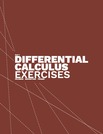
A collection of problems relevant to most Calculus I courses.
- Subject:
- Calculus
- Mathematics
- Material Type:
- Homework/Assignment
- Provider:
- University of British Columbia
- Author:
- Andrew Rechnitzer
- Elyse Yeager
- Joel Feldman
- Date Added:
- 08/30/2023

A collection of problems relevant to most Calculus I courses.

This textbook covers single variable Integral Calculus. Problem book is available.
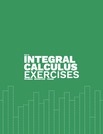
A companion to the CLP-2 Integral Calculus textbook.
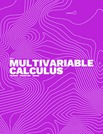
This textbook covers multivariable Calculus. There are chapters on vectors and geometry in 2 and 3 dimensions, partial derivatives, and multivariable integrals.
Problem book available.
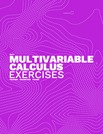
Companion to CLP-3 Multivariable Calculus textbook.
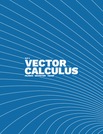
This textbook covers Vector Calculus. There are chapters on curves, vector fields, surface integrals and integral theorems (such as the divergence theorem).
Problem book available.
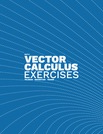
Companion to CLP-4 Vector Calculus.
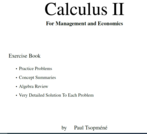
The most important way to learn calculus is through problem-solving. While going through the solution to a problem, students are often faced with several issues. They may not see the connection between the concept taught in class and the solution. Others may not understand the solution because a step is missing or there are insufficient explanations. Or because they have weak algebra skills. The main goal of this exercise book is to address these issues to help students learn the material more efficiently and get better results. The book contains a wide variety of problems in integral calculus and multivariable calculus, with applications in differential equations, probability, management, and economics. Every problem has a very detailed solution, and the book is self-contained, as the summary for every concept is provided.
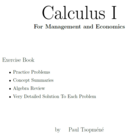
The most important way to learn calculus is through problem-solving. While going through the solution to a problem, students often face several issues. They may not see the connection between the concept taught in class and the solution. Others may not understand the solution because a step is missing or there are insufficient explanations. Or because they have weak algebra skills. The main goal of this exercise book is to address these issues to help students learn the material more efficiently and get better results. The book contains a wide variety of problems in differential calculus with applications in management and economics. Every problem has a very detailed solution, and the book is self-contained, as the summary for every concept is provided.
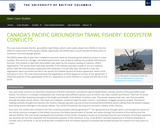
The case study involves the B.C. groundfish trawl fishery, which came under attack from ENGOs in the mid-2000s for destruction of the aquatic habitat. Specifically, the ENGOs were concerned with he destruction of numerous coral and sponge species. The ENGOs were able to give their complaints economic teeth by threatening the industry’s access to major markets. The resource manager, the federal government, was unable to address the problem effectively at the time. The initiative to deal with the problem was taken by the industry, leading to industry –ENGO negotiations. This would never have been possible, if the industry had been unable to act as a cohesive whole. How this intra-industry cooperation was achieved is not yet fully clear. Be that as it may, the negotiations were successful and led to the world’s first habitat bycatch limitation agreement, which came into place in 2012. The case study examines the negotiations and the degree of success of the agreement. It raises the question of the applicability of the B.C. experience to other fisheries in Canada and the rest of the world.
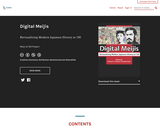
Revisualizing Modern Japanese History at 150
Short Description:
Digital Meijis: Re-visualising Modern Japanese History at 150 is a curated and edited collection on the Meiji Period. By pairing digitized materials and documents with historical narrative and interpretive analysis, the “visual essays” contained within encourage readers to review and rethink modern Japanese history through images.
Long Description:
Digital Meijis: Re-visualising Modern Japanese History at 150 grew out of one aspect of this larger project, the Meiji at 150 Digital Teaching Resource. Curated and edited by Tristan Grunow and Naoko Kato, the Meiji at 150 Digital Teaching Resource and this companion volume were designed to present and widely disseminate research on the Meiji Period in a public format designed for easy adoption in the Japanese studies classroom. By pairing digitized materials and documents with historical narrative and interpretive analysis, the “visual essays” contained within encourage readers to review and rethink modern Japanese history through images.
Word Count: 69194
(Note: This resource's metadata has been created automatically by reformatting and/or combining the information that the author initially provided as part of a bulk import process.)
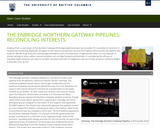
Drawing from a case study of the Northern Gateway (Enbridge) pipeline project we consider if it is possible to reconcile or mediate the conflicting objectives and goals of the resource proponent and the First Nations whose lands the pipeline will traverse. We will draw from the existing legal precedents and a consideration of approaches taken to such disputes in similar settings in other settler-colonial societies such as New Zealand and Australia. In considering the efficacy of Canadian legal measures we need to consider the place and role of Indigenous laws and if they are given sufficient weight in disputes such as this.

All engineering students in Canada must take an Engineering Economics course as part of program accreditation requirements. These courses mainly focus on the evaluation of monetary profits and direct financial costs incurred during the design, operation and decommissioning phases of projects. Instructors commonly use textbooks as the primary tool to guide the students through the content of this course, which tend cost around $100 each student. Like many courses, the materials in this course does not change much over time resulting in many students opting to not buy the required textbook and instead rely on free sources of information found online, in older editions of textbooks or simply rely on course notes. The patchwork of sources creates problems in this course in particular, because of the variation of notation used across sources, which can easily cause confusion. It was this problem that inspired the creation of a set of open-source materials that students and instructors can use for free, enabling the instructor to have control over notation and concepts to focus on while saving the students money. As such, these materials were created with the support of the Open Educational Resource Fund through an OER Implementaion Grant. A faculty member led the creation of the materials with the help of a team of undergraduate engineering and commerce students (all named as authors). The early planning stages of the project included rethinking the traditional textbook format, and opting instead to produce annotated and comprehensive slides designed to function as both study aids for students and instructional tools for educators. The foundational concepts of engineering economics were systematically organized into twelve distinct chapters, each represented by a PowerPoint slide deck. Each deck includes a title page and a table of contents slide (for organizational purposes), with the remaining slides relatively content heavy. While prioritizing accessibility through readable formatting (able to be read by software for those who are visually impaired), minimal emphasis was placed on a particular presentation style. This straightforward format intentionally allows instructors flexibility to tailor the material to their preferences. Instructors are afforded the latitude to infuse their distinctive approach, incorporating personal touches, stylistic elements, anecdotes, pertinent visuals, or discipline-specific case studies as deemed appropriate. The intent was to empower instructors with a malleable framework that accommodates diverse teaching styles and facilitates the integration of contextually relevant content. Additionally, a set of practice problems (including solutions), were created for every chapter for self-paced student engagement. The formulation of questions, encompassing both in-class examples and practice problems, adhered to a gender-neutral phrasing approach to ensure inclusivity. Additionally, all questions were designed to be discipline-neutral, accommodating diverse engineering departments and enhancing the materials' applicability for dissemination purposes. To ensure uniformity of notation across the slides and practice problems during development, a list of variables and a formula sheet were also created and included as integral components of the materials package.
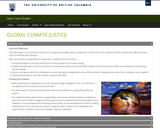
What distribution of adjustment costs for climate change mitigation is fair, and should be acceptable to the most (important) countries? Are there ways of framing the issue that could be more effective in galvanizing effective action?
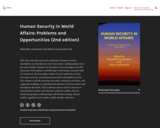
Short Description:
This first and only university textbook of human security, intended as an introductory text from senior undergraduate level up, and includes chapters by 24 authors that encompass the full spectrum of disciplines contributing to the human security field. It is based on the four-pillar model of socio-political security, economic security, environmental security and health security. The chapters include learning outcomes, extension activities, and suggested readings; a comprehensive glossary lists key terms used throughout the book. This textbook can be used in courses on international studies and relations, political studies, history, human geography, anthropology and human ecology, futures studies, applied social studies, public health, and more.
Long Description:
This first and only university textbook of human security is intended as an introductory text from senior undergraduate level up, to be used in courses on international studies and relations, political studies, history, human geography, anthropology and human ecology, futures studies, applied social studies, public health, and other fields.
Its second, thoroughly revised and updated edition will represent again in a coherent fashion the field of human security and will set it apart from more traditional models of security. Its approach is again deliberately multidisciplinary and transcultural. In addition to a thorough overview of the human security concept, the chapters address problems and opportunities in international law, politics, international relations, human ecology, ethics, law enforcement, development aid, human rights, and public health. The reader is also introduced to specific human security regimes that address human rights violations, peace building and conflict resolution, as well as global environmental governance.
The book encourages a vision of the future that acknowledges the certainty of change, extrapolates significant current trends, and questions the values, beliefs and ideals that tend to inform some dominant notions of development. Because of its transdisciplinary approach, the book will appeal to a very wide range of interests at the post-secondary/tertiary level. It will be of particular interest to undergraduate and graduate students and researchers, and also to educators from various disciplines in the natural sciences, social sciences, and humanities.
Word Count: 304560
ISBN: 978-1-77420-077-3
(Note: This resource's metadata has been created automatically by reformatting and/or combining the information that the author initially provided as part of a bulk import process.)
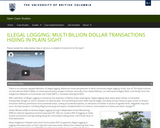
There is no common agreed definition of illegal logging. Below are three perspectives of what constitutes illegal logging: firstly, that of The Royal Institute of International Affairs (RIIA), an international policy analysis institute, secondly, from Global Witness, an international Rights NGO, and thirdly, from the Indigenous Network on Economies and Trade (INET), a Canadian Aboriginal NGO.
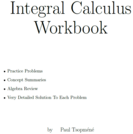
This workbook is primarily for students taking a first-year single variable integral calculus course. Topics covered include integration, techniques of integration, differential equations, and infinite series. The book is divided into two parts, with the first part featuring a diverse set of problems with some practical applications. The second part includes the solutions (each problem has a very detailed solution). Summaries of concepts are also included to make the workbook self-contained. OER Description: This problem bank was developed to support undergraduate lower-division students in integral calculus. Using practice problems with detailed solutions, solution prompts, examples, and concept summaries, this open educational resource supports students in building the problem-solving skills needed to master calculus.
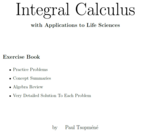
This exercise book contains a wide variety of problems in integral calculus, linear algebra, and linear regression, with applications to differential equations, probability, and life sciences. Every problem has a very detailed solution, and the book is self-contained, as the summary for every concept is provided. The book aims to help students learn the material more efficiently and get better results.
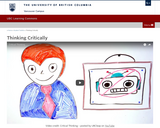
One of a set of toolkits to support student development and personal reflection. Produced by students for students.
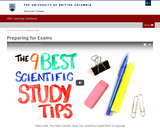
One of a set of toolkits to support student development and personal reflection. Produced by students for students.